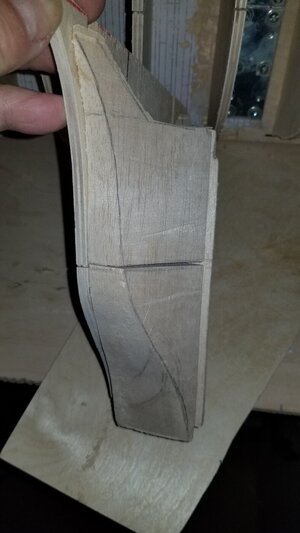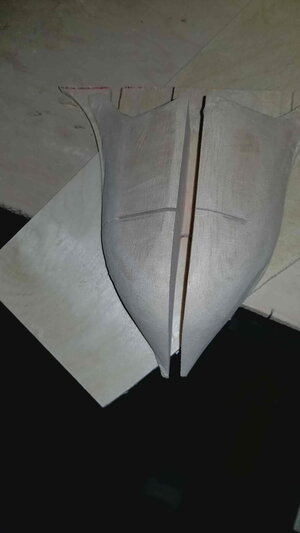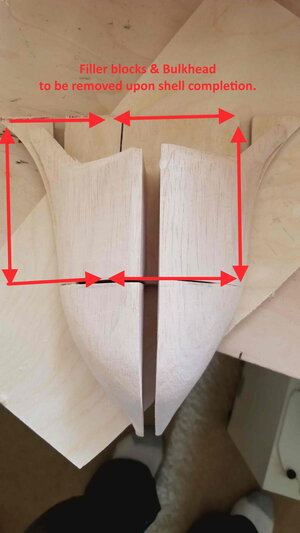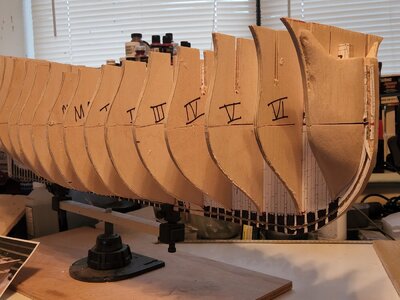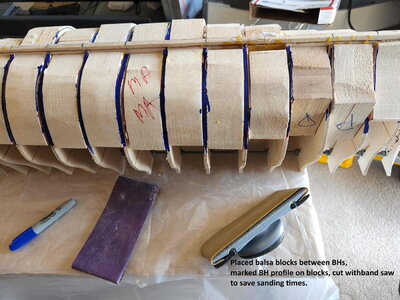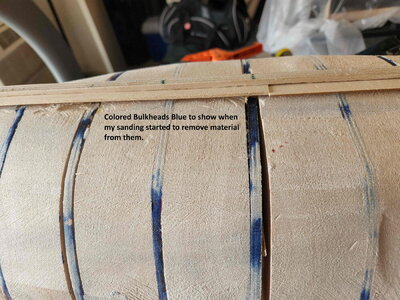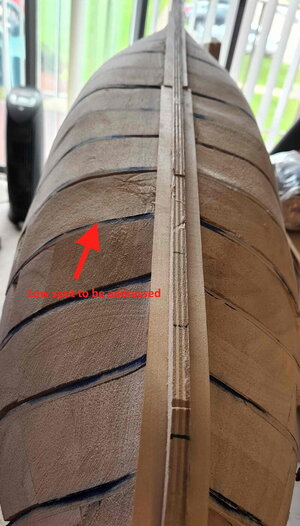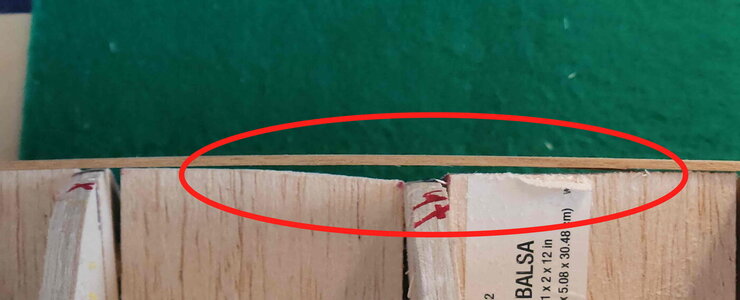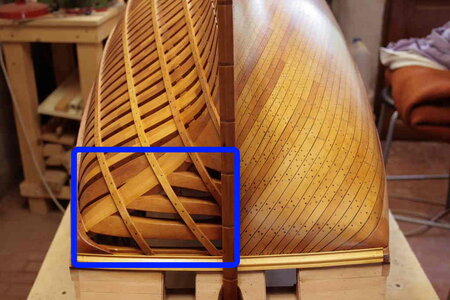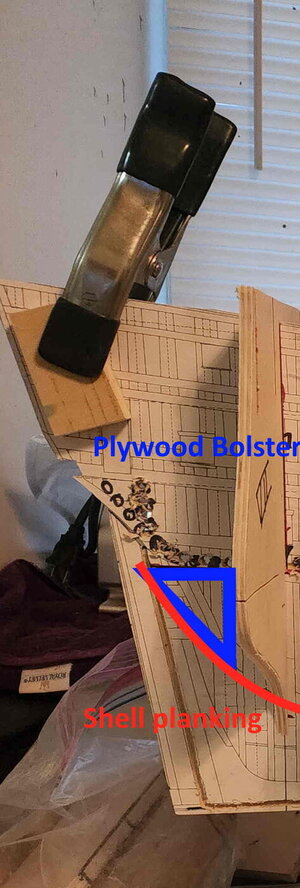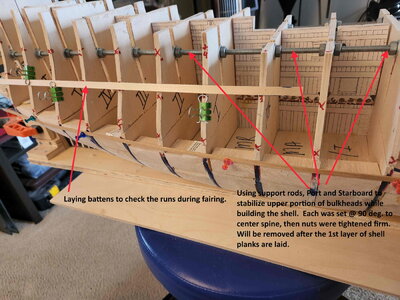Nothing gets by you Paul. I listen to everyone's advice, but I may not follow everyone's. Ultimately, I have to own my decisions, right or wrong, good or bad!

To me, that is actually the core of this entire exercise.
With that said, I value the experience and knowledge of all those who have gone before me.
"Dimples" don't worry me too much. Voids, however do. Considering it doesn't take much to rectify them, I will be as thorough as I can in addressing them.
Typically, fairing is to bevel the bulkheads or frames to allow the next planking layer (1st and 2nd or final) to lay flush, thereby creating a smooth external hull, with no waves or bumps. One of the things to remember in this method is, I'm building out in 3 layers before I even lay my final Pear planking layer. The bulkheads as they exist right now are not the correct perimeter dimension. I have to build them out, one layer of shell planking at a time. Each time I complete a layer of shell planking presents an opportunity for me to check the hull at each bulkhead.
After the 2nd layer I plan to do a very thorough check, using a negative profile at each bulkhead vs. the body elevation plan to see where I am. I anticipate that will tell me if I'm close to correct external dimension at that bulkhead. Once each individual bulkhead is very close to plan, the subsequently, the hull should be very close to plan. Normally the fairing is solely critical in achieving the correct hull profile and volume, and the last chance to get this correct prior to external planking. In this case the final hull planking will not be laid onto bulkheads or even a first/primary layer of planking but on a finished shell. The shell itself will conform to the dimensions of the plan, albeit, 2mm shy of the final external dimension.
Theoretically, the method I'm using is more forgiving as I have more than one point in the build process to measure and make adjustments. Theoretically being the operative word. Since is this is my first attempt at this, I'll let you know. Actually, you'll be a witness.

I hope I've shared my approach clearly. I can get "wordy" and I'm working on that.

Thanks Paul for sharing your perspective. I greatly appreciate it.
Cheers.






